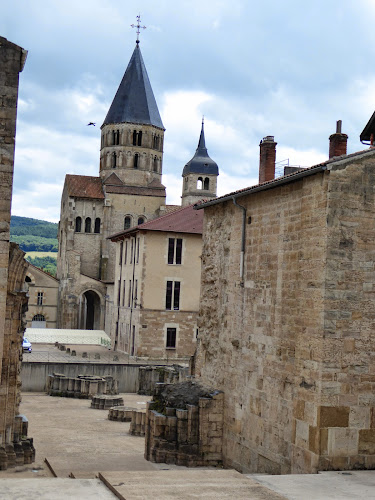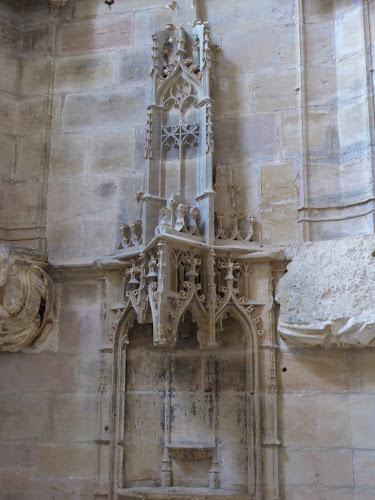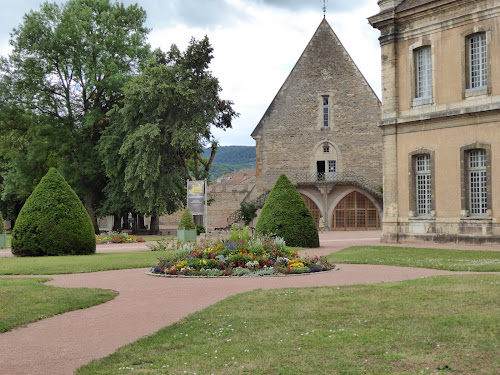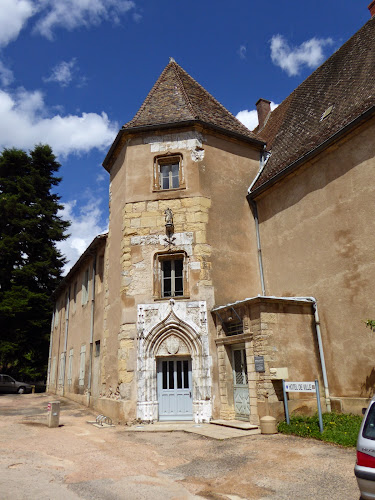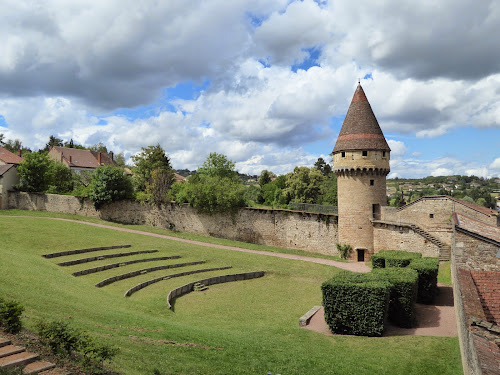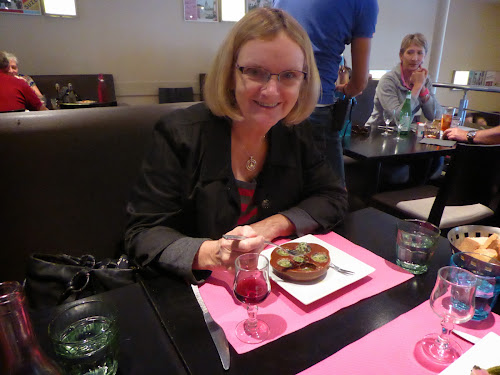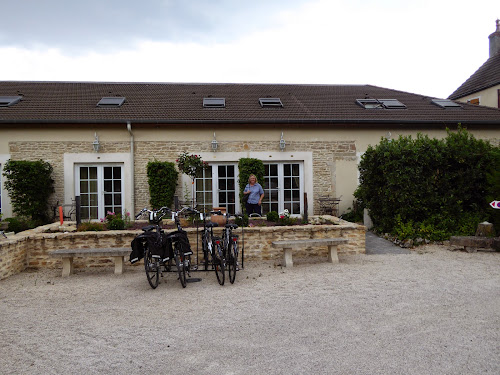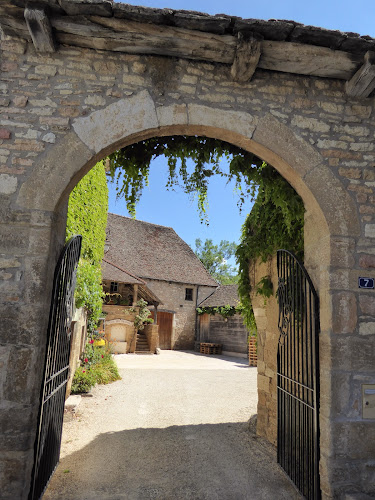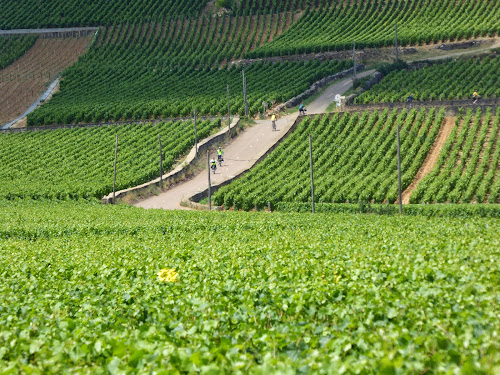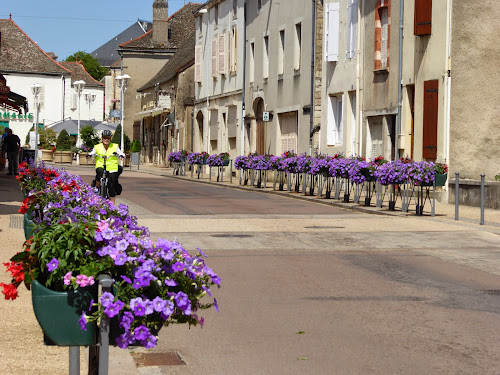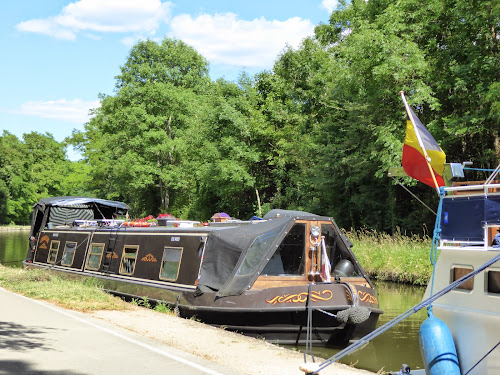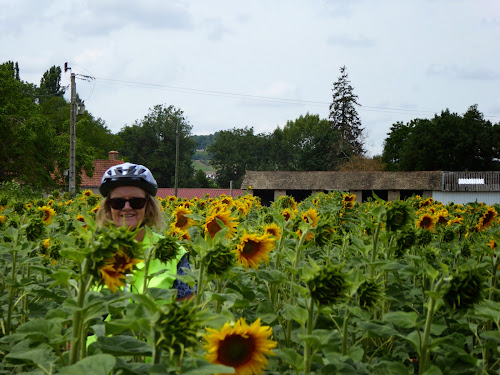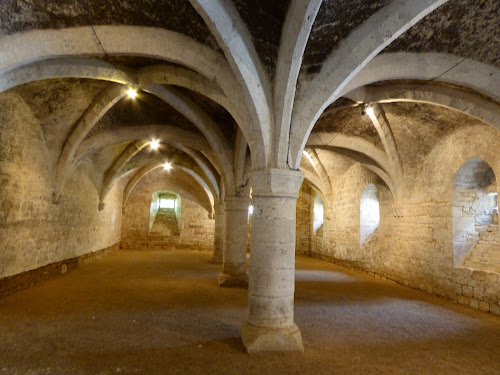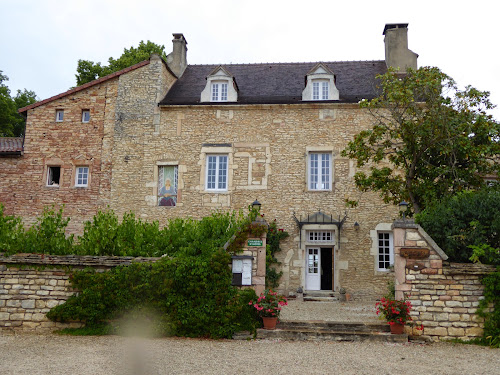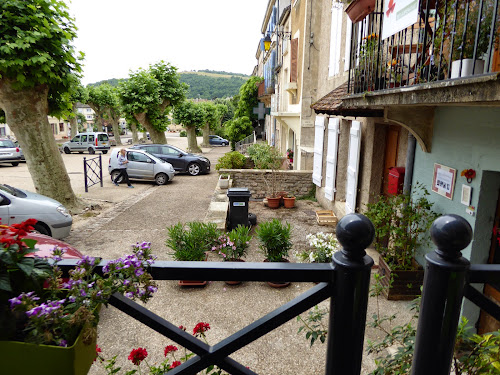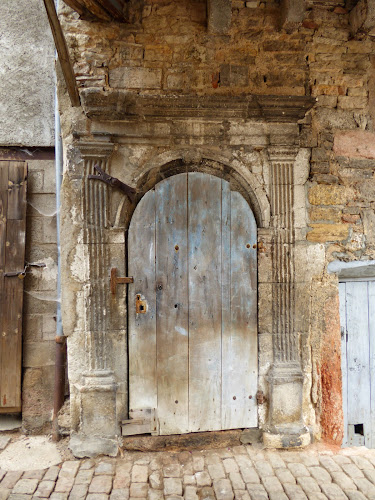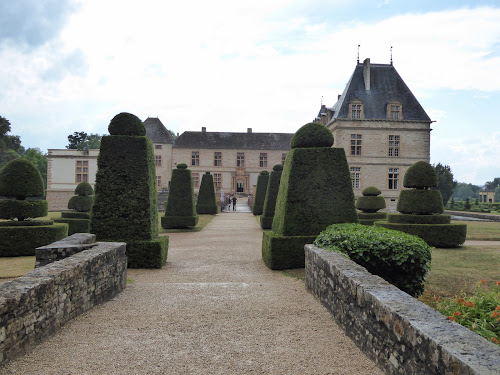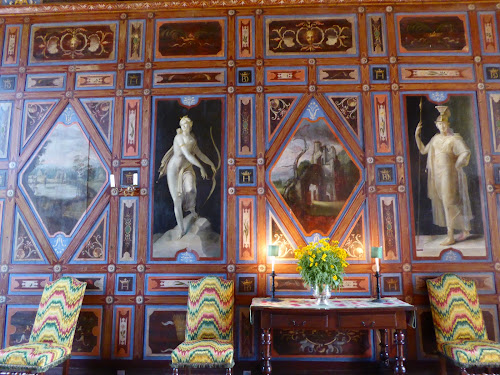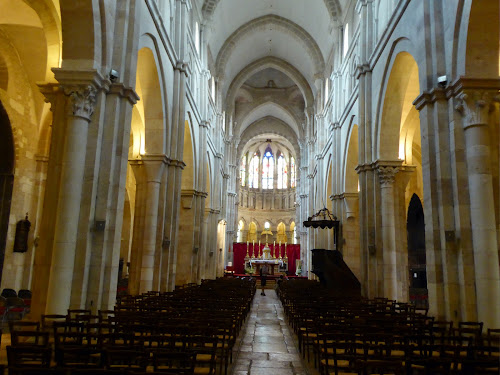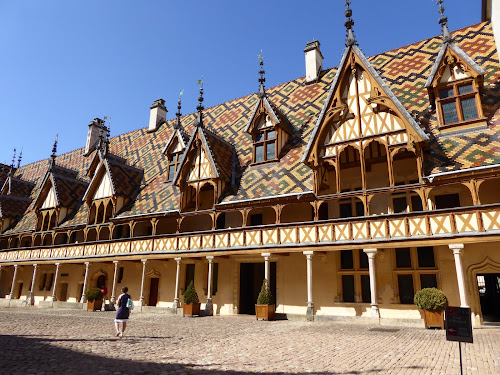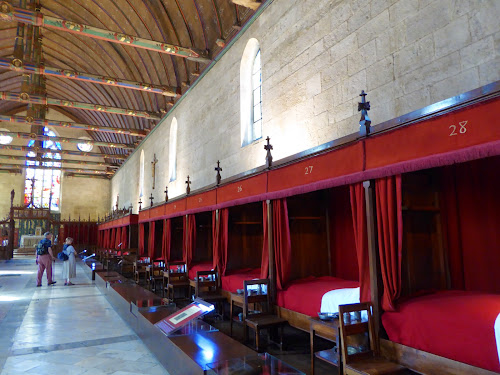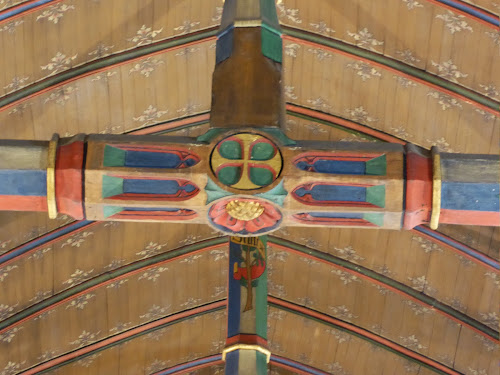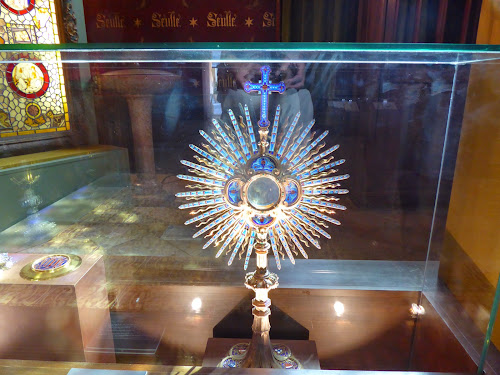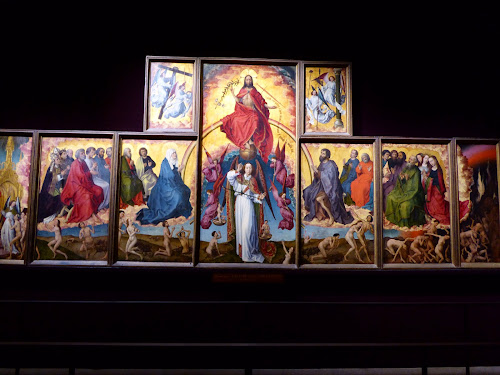We stopped for two nights in the lovely town of Cluny, famous for it's huge Benedictine Abbey, founded in 910. The Abbey was built in Romanesque style and was the wealthy leader of western monasticism for many years, heading up 1,100 monasteries and priories all over Europe. It was a major spiritual and intellectual centre in the Middle Ages. Many of it's buildings were destroyed in 1791 during the French Revolution. What a shame.
The height of the vaulting is amazing, as was the length of the nave.
Some detail of the original sculpture.
The 18th century cloisters were built over the original Roman cloisters.
A remaining 13th century building, probably the flour store.
The house for the guests of the abbot.
The Fabry Tower is part of the Abbey's fortifications.
Our hotel, Hotel de Bourgogne, was built along the wall of the original nave of the Abbey.
As well as a view of the Abbey, our hotel room also over looked the National Horse Stud Farm.
Along the streets of the medieval town that grew to service the Abbey.
This time Joy tries snails, a speciality of the area. Also delicious.
